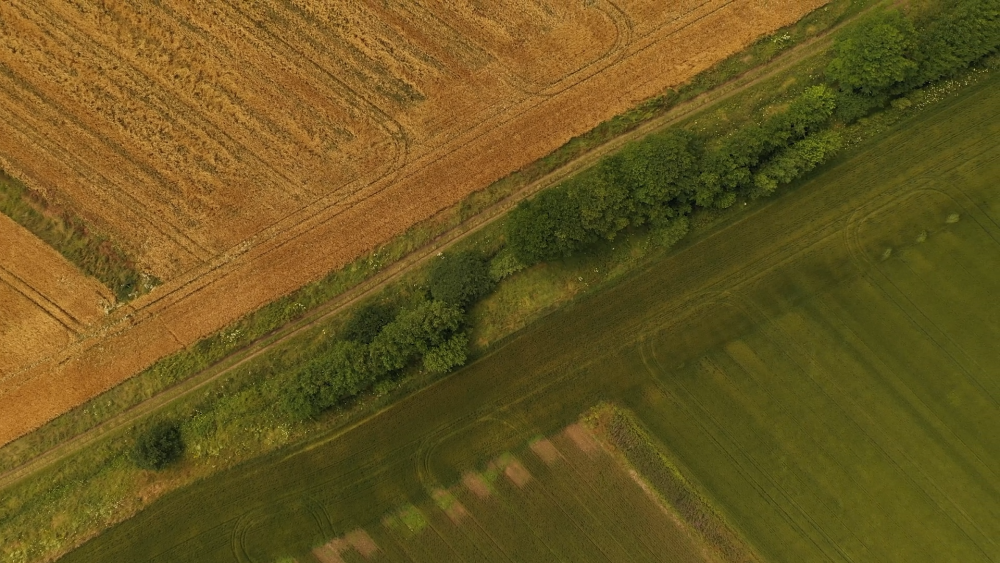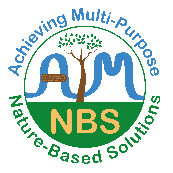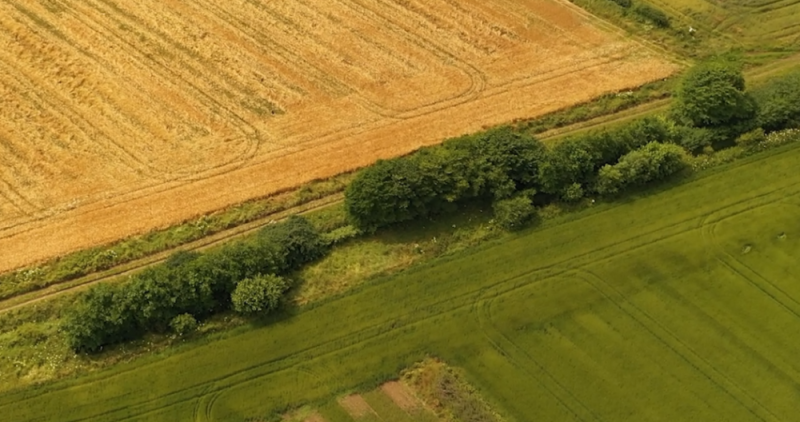3D Buffer Zones
27 September 2023The current design of riparian buffer strips focuses on shrubby grass strips meant to capture or contain surface runoff. However, new research shows that based on soil type, slope, and land use, these strips may not be the best method. 3D buffers are an integrated system of plantings and landscaping measures in riparian areas to better intercept agricultural pollution from atmospheric, surface and subsurface pathways [1].

3D buffers can also provide additional benefits to biodiversity including:
Offer shading, habitat and protection for aquatic life
Creation of valuable wetter habitats with tile drain fed wetlands
Habitat provisioning for natural pest predators
Increased farm biodiversity through wildflower strips
Read more about 3D buffer concept and the wider ecosystem services they supply.
Designing Bespoke 3D Buffers
3D buffers can be focused on targeting certain problem points, where water is more likely to flow due to field characteristics or types of soils that may be allowing more subsurface runoff to pass through them. [2] A full-scale evaluation of each riparian area including local topography, hydrology and landowner flexibility should be undertaken whenever possible. New tools like LiDAR mapping, photogrammetry, and hydrology measurements can help to better characterise the catchment and identify the best measures to be used in a 3D buffer.
Examples of considerations when choosing measures:
Grass buffers are suitable for moderate surface run-off on flat floodplains however unsuitable for steeper slopes and can’t intercept sub- surface artificial drainage.
Wooded buffers can be used to create roughness and intercept surface run off and their roots can intercept subsurface leaching. However, they should not be used on peaty soils and can’t specifically target artificial drainage.
Sediment filter fences are great at intercepting high surface run off but not on free draining soils and are advised only as a last resort.
Artificial drain-fed wetlands can intercept and treat drain water however only on floodplains or shallow slopes and can get choked up with high volumes of water.
Through considering the benefits of each measure, a 3D buffer can be designed that integrates several measures to fit with the characteristic of the land and targets the key pollution pathways. [3] [4] (Figure 1). Researchers have found that integrated options (combining filter bed, tree and pond components) can tackle multiple pathways at field edges, including tile drains, leading to up to two-thirds reductions of nitrogen and phosphorus loads to surface waters.
![3d Buffer Schematic Figure 1: 3D buffer schematic, Zak et al. (2018) Environ. Sci. Technol. 11, 6508-17 [5]](https://www.fas.scot/wp-content/uploads/2023/09/3d-Buffer-Schematic.gif)

Collaboration in a catchment addressing riparian areas in a holistic way, such as including multiple landowners and thinking at a catchment scale can increase the status of a waterbody and also habitat connectivity in a catchment. Projects such as the Delliefure Burn and Revive the Allan show the improvement, which can be achieved while working collaboratively within a catchment.
Through the design and installation of a 3D buffer system, you can create a bespoke system, which is designed for your farm and can help mitigate and protect your land. If you would like to learn more about these systems please contact your local advisor or below are resources of information to get you started.
The research on 3D Buffers was supported by the Rural and Environment Science and Analytical Services Division (project: Achieving Multi-Purpose Nature-Based Solutions [JHI-D2-2]). See Achieving Multi-Purpose Nature-Based Solutions | The James Hutton Institute for further information.

Related Resources
3D buffers are riparian buffer strips and can be designed to build on and enhance the ecosystem services provided by standard buffers by combining the benefits of grassy and woody buffers. In this video we discuss 3D buffers with Mark Wilkinson and Marc Stutter from JHI.
References
[1] Stutter, M., Wilkinson, M. and Nisbet, T., 2020. 3D buffer strips: Designed to deliver more for the environment. Environment Agency.
[2] Stutter, M. and Wilkinson, M.E., 2022. Can improved design concepts for riparian buffer measures and placement improve uptake and best practice in Scotland.
[3] Cole, L.J., Stockan, J. and Helliwell, R., 2020. Managing riparian buffer strips to optimise ecosystem services: A review. Agriculture, ecosystems & environment, 296, p.106891.
[4] Stutter, M., Wilkinson, M. and Nisbet, T., 2020. 3D buffer strips: Designed to deliver more for the environment. Environment Agency.
[5] Zak, D., Kronvang, B., Carstensen, M.V., Hoffmann, C.C., Kjeldgaard, A., Larsen, S.E., Audet, J., Egemose, S., Jorgensen, C.A., Feuerbach, P. and Gertz, F., 2018. Nitrogen and phosphorus removal from agricultural runoff in integrated buffer zones. Environmental science & technology, 52(11), pp.6508-6517.
Rachel Smillie, SAC Consulting
Sign up to the FAS newsletter
Receive updates on news, events and publications from Scotland’s Farm Advisory Service

